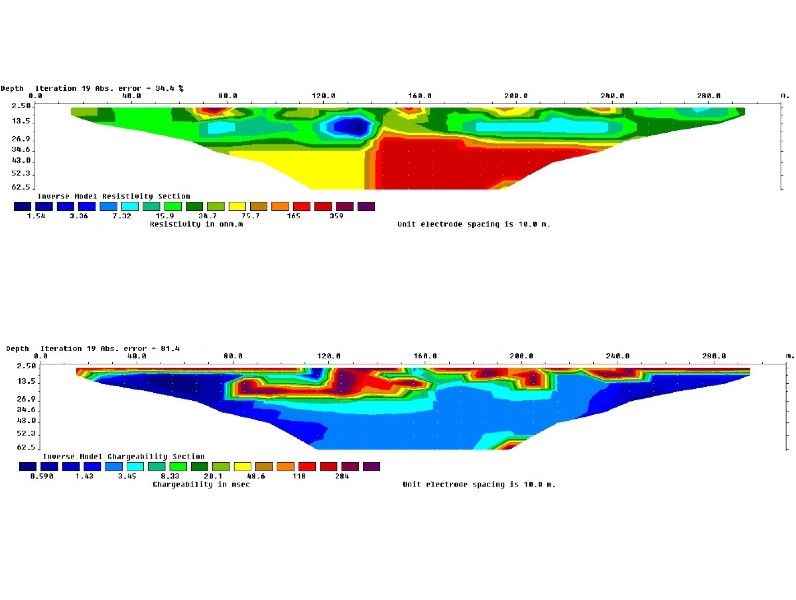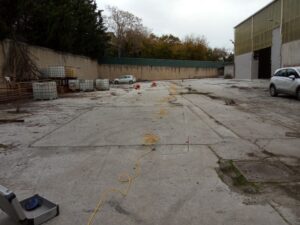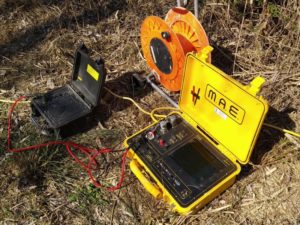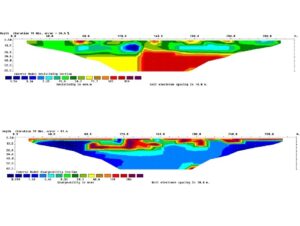What is it?
Geoelectric investigation is an effective and non-invasive geophysical survey technology. This technique is based on materials response to electricity passage in the subsoil.
What is it for?
Geoelectric investigation is suitable for a complete site evaluation. In fact, it allows us to detect the presence of elements in the subsoil without the need for an invasive investigation, consisting in direct soil drilling. Furthermore, geoelectric surveys are used to locate explorative drilling points in inaccessible sites or areas of natural importance.
How is it done?
In order to collect data on site, electrodes are set into the ground with constant inter-electrodes spacing. A known flow of electricity (I) is injected in the soil, using two electrodes called “current electrodes” (or electrodes A and B). In the meantime, other two electrodes known as “potential electrodes” (or electrodes M and N) detect the electric potential difference resulting from the passage of electric current.
The searched parameter is Electrical Resistivity: it sets the materials attitude to resist electric charges flow and is expressed in Ωm. It is possible to derive Electrical Resistivity from the relation linking released current intensity (I), electrical potential difference (ΔV) and inter-electrodes spacing.
Fields of application:
By processing data trough specific software packages, it is possible to collect information regarding the subsoil that is essential for many areas of work:
- Geotechnics: control of damaged buildings, sliding surface of active landslides detection, natural/anthropic caves search and foundation laying plan identification;
- Environmental remediation: uncontrolled landfill, soil pollution and contaminants leakage detection;
- Hydrogeology: springs search, permeability mapping and aquifers modelling;
- Archaeology: artefacts and buried bodies location.
Condividi questo Articolo






